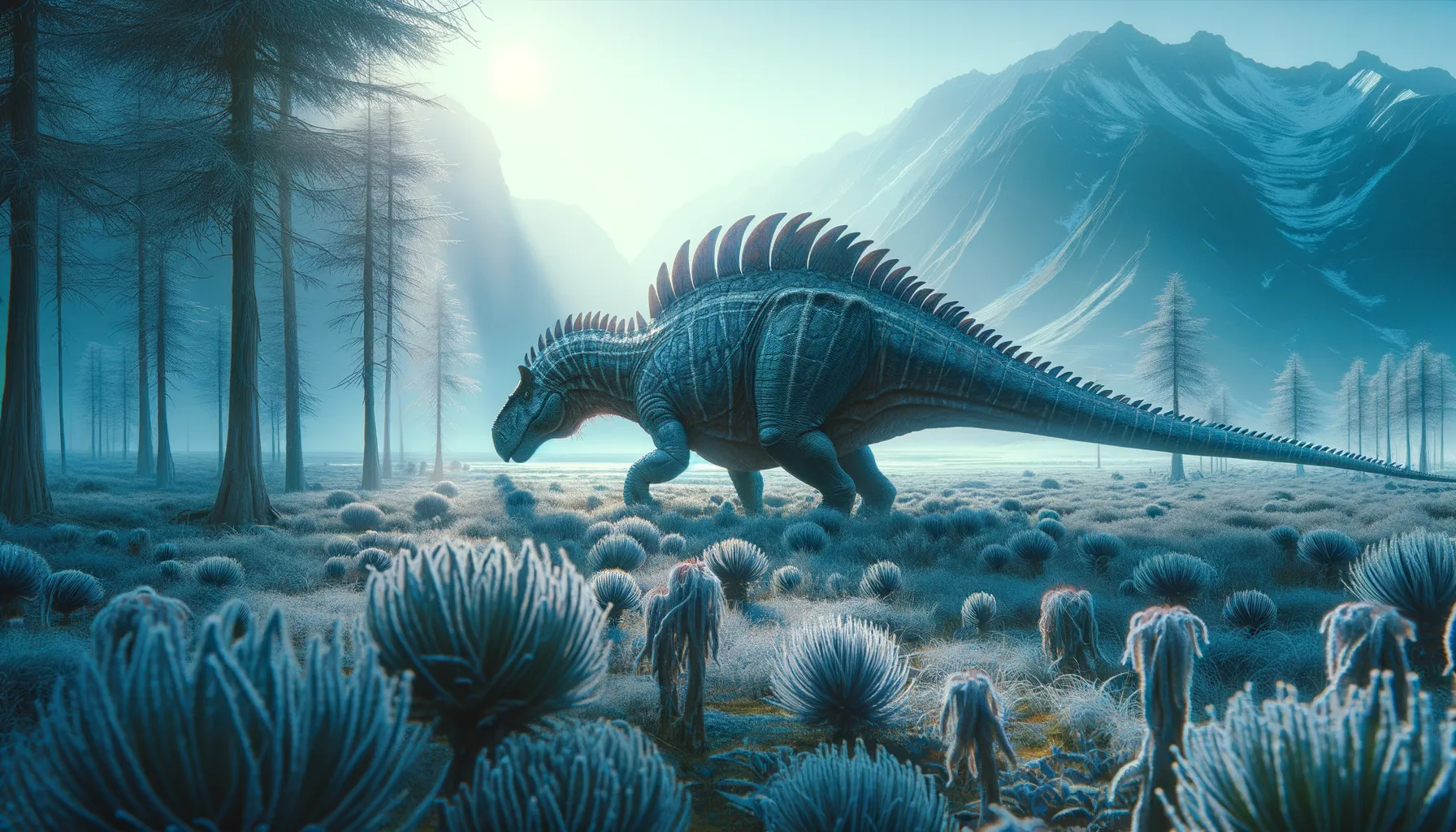
Talarurus
Armored and ready for any Cretaceous battle!
Period
Cretaceous
Length
About 6 meters long.
Height
Around 1.5 meters tall.
Weight
Approximately 1 ton.
Talarurus was an armored dinosaur from the Late Cretaceous period, known for its distinctive clubbed tail and heavy body armor. It roamed the ancient ecosystems of what is now Mongolia. Despite its formidable protection, Talarurus was a herbivore, feeding on low-lying plants. Its strong, bony armor provided protection against predators, allowing it to safely graze without the constant threat of attack.
Diet
Talarurus was a herbivore, primarily feeding on low-growing vegetation. Its broad, beak-like mouth was ideal for stripping leaves and plants.
Hunting
Talarurus did not hunt as it was a plant-eater. Instead, it foraged for vegetation in its environment, relying on its armored body to deter predators.
Environmental challenges
Talarurus had to navigate the semi-arid environments of the Late Cretaceous, where water sources could be scarce. Seasonal changes and fluctuations in plant availability would have posed challenges, forcing it to travel to find adequate food resources. The presence of large predators meant it had to remain vigilant, relying on its armor for protection.
Speed
Slow-moving due to heavy armor.
Lifespan
Estimated to live several decades.
First discovery
Discovered in Mongolia in 1952.
Fun Facts
- Talarurus was a dinosaur that lived about 90 million years ago during the Late Cretaceous period.
- Its name means 'basket tail', referring to its distinctive tail club that was likely used for defense.
- Talarurus was a herbivore, feasting on low-lying plants and shrubs in its environment.
- This dinosaur was part of the ankylosaur family, known for their armored bodies.
- Talarurus fossils have been discovered in Mongolia, providing insights into the prehistoric ecosystem of that region.
- Unlike some of its relatives, Talarurus had a relatively shorter and sturdier tail club.
- The first Talarurus fossils were unearthed in the 1950s during Soviet-Mongolian expeditions.
Growth and Development
Young Talarurus would have been more vulnerable to predators, gradually developing their signature armor as they matured. Growth would have been steady, with the primary investment in developing defensive capabilities early in life. Regular access to food and resources was essential to reach full maturity.
Habitat
Talarurus inhabited the floodplains and semi-arid regions of ancient Mongolia. This landscape provided a variety of plant life, sustaining its herbivorous diet. The environment featured seasonal rivers and vegetation patches, which were crucial for its survival needs.
Interaction with other species
Talarurus existed alongside other dinosaurs, often sharing its habitat with large herbivores and predatory species. Its armor enabled it to coexist with potential threats, minimizing direct competition. Fossil evidence suggests it may have moved in small groups for additional safety.
Natural lifespan
Talarurus likely lived up to 25 years or more.
Reproduction
Talarurus is believed to have laid eggs, with nesting sites likely chosen for protection. Young ones would rely heavily on their innate physical defenses as they developed. Parental care details remain largely speculative.
Social behaviour
This dinosaur might have been social, possibly moving in small herds to enhance protection against predators. Communication could have involved visual displays using its body armor or tail. Such behavior would facilitate coordinated movements and shared alertness.
Fossil locations
Fossils of Talarurus have primarily been found in Mongolia, particularly in the Gobi Desert region. The discovery sites have provided insights into the type of flora and fauna which surrounded it during the Cretaceous period.
